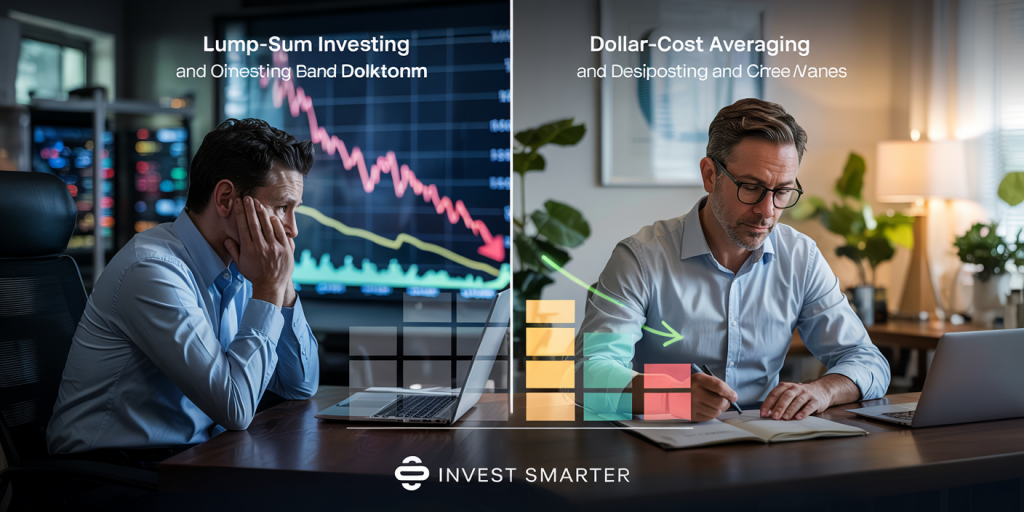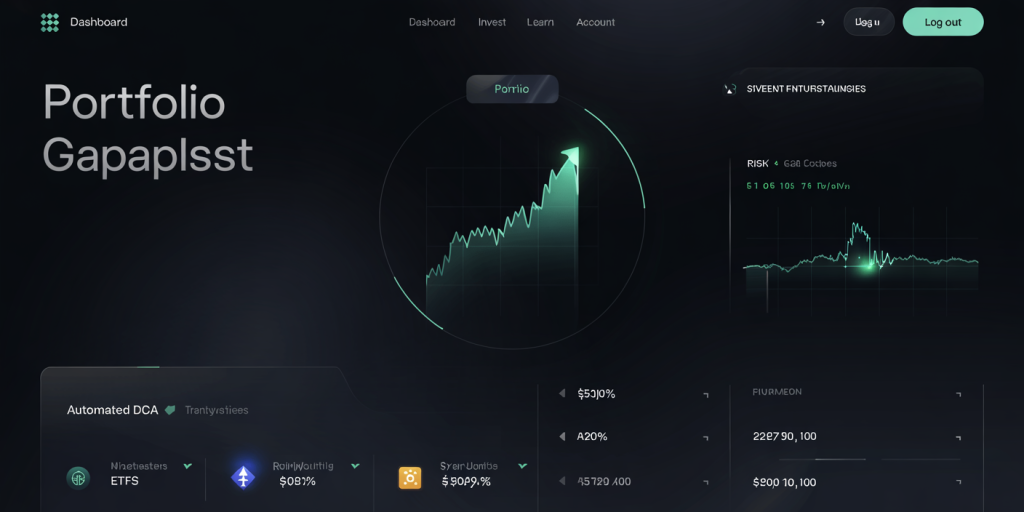How to Use Dollar-Cost Averaging to Invest Safely Over Time
In the world of investing, managing risk while seeking consistent growth is a priority for many investors. Dollar-cost averaging (DCA) is a popular investment strategy that can help mitigate the impact of market volatility, ensuring a steady accumulation of assets over time. By consistently investing a fixed amount regardless of market conditions, DCA offers a disciplined approach that reduces emotional decision-making and optimizes entry points.
This article explores the practical aspects of using dollar-cost averaging to invest safely over an extended period. Drawing from real-world examples, statistical data, and comparative insights, it offers a comprehensive guide to implementing this method effectively.
—
Understanding Dollar-Cost Averaging: The Basics and Benefits
Dollar-cost averaging is an investment strategy where an investor divides the total amount to be invested across periodic purchases of a target asset. This method is designed to reduce the impact of volatility by spreading the investment across different price points. This is particularly advantageous in fluctuating markets where timing a single purchase correctly is challenging.
For example, consider an investor allocating $1,200 annually into a mutual fund, investing $100 at the start of each month. When prices are low, the monthly fixed amount buys more shares. Conversely, fewer shares are purchased when prices are high. Over time, this tends to lower the average cost per share compared to lump-sum investing, especially during volatile market phases.

In terms of benefits, DCA reduces the risk of making significant investments at market peaks, which can lead to losses. Moreover, it encourages consistent investing habits, helping overcome psychological biases such as fear and greed. According to a 2021 study by DALBAR, investors who practiced systematic investment strategies like DCA often outperformed those trying to time the market, which is often unsuccessful.
—
Practical Examples of Dollar-Cost Averaging in Action
Real-life applications demonstrate how dollar-cost averaging helps investors navigate different market conditions. For instance, during the 2008 financial crisis, many investors who engaged in DCA by investing regularly into index funds like the S&P 500 saw their average purchase price decrease, setting the stage for recovery gains as the market rebounded.
Consider two investors starting with $12,000 to invest in 2008 – one invests the entire amount in January (lump-sum), and the other uses dollar-cost averaging, investing $1,000 monthly for 12 months. The lump-sum investor purchased shares at the market peak just before the crash, facing immediate paper losses. In contrast, the DCA investor acquired more shares during the downturn, lowering their average share price and benefiting from the subsequent market recovery through 2010.

Table 1 below contrasts these two approaches:
| Investor Type | Investment Method | Average Purchase Price | Market Value at End of 2009 | Outcome |
|---|---|---|---|---|
| Lump-Sum Investor | One-time $12,000 | High ($144) | $10,000 | 16.7% loss |
| DCA Investor | $1,000/month | Lower average ($120) | $13,000 | 8.3% gain |
*Data is illustrative and based on average S&P 500 values (2008-2009).*
The example highlights how spreading investments reduced the downside risk during a crisis. This concept applies similarly to other asset classes including ETFs, bonds, and even cryptocurrencies, where high volatility is common.

—
How to Set Up a Dollar-Cost Averaging Plan
Setting up a DCA plan requires careful consideration of investment goals, time horizon, and asset type. The first step is determining a suitable fixed amount to invest regularly. This amount should fit comfortably within your budget without causing financial strain.
Next, select the investment vehicle that aligns with your risk tolerance and goals. Popular choices include broad-market index funds, sector-specific ETFs, or dividend-paying stocks. Automated platforms offered by brokers now allow users to schedule periodic investments, eliminating the need for manual intervention each time.
For example, an investor using a brokerage like Vanguard or Fidelity can set up automatic monthly transfers from a checking account to an ETF or mutual fund. Automation not only ensures discipline but also removes emotional interference that often leads to poor timing decisions.
Also consider the frequency of investments. Monthly contributions are common, but some investors prefer weekly or quarterly intervals depending on cash flow and preferences. It’s essential to maintain consistency regardless of market movements to fully benefit from the strategy.
—
Assessing Dollar-Cost Averaging Compared to Lump-Sum Investing
While DCA is appealing for risk management, it does not always outperform lump-sum investing. Investment academic research shows that investing a lump sum upfront statistically beats DCA roughly two-thirds of the time because markets tend to rise over the long term.
A 2020 study by Vanguard analyzed over 40 years of data and concluded that lump-sum investing outperformed DCA 66% of the time with an average outperformance of 0.8% annually. However, that study also acknowledged that DCA limits downside risk and can improve investor behavior by reducing anxiety.
To illustrate differences more concretely, Table 2 presents a comparison of DCA and lump-sum investments over various market scenarios:
| Market Condition | Lump-Sum Outcome | DCA Outcome | Best Strategy |
|---|---|---|---|
| Strong Bull Market | Higher returns (up to 15%) | Slightly lower returns | Lump-sum |
| Volatile/Declining Market | Immediate loss (up to 25%) | Smoothed losses | DCA |
| Sideways Market | Slight gains or losses | Moderately stable | DCA |
In summary, lump-sum investing benefits investors with more risk tolerance and long investment horizons. Dollar-cost averaging fits investors aiming for stability and reducing timing risks.
—
Common Mistakes to Avoid While Using Dollar-Cost Averaging
Although DCA is straightforward, investors often make errors that can hinder its effectiveness. One common mistake is stopping contributions during down markets, which defeats the purpose of buying more shares when prices fall.
Another frequent error is choosing inappropriate assets. For example, applying DCA solely to speculative assets without diversification can expose an investor to unnecessary risk despite regular investments.
Additionally, not considering fees can erode returns. Investing small amounts frequently in funds with high transaction costs can reduce net gains. It’s crucial to select low-cost funds and platforms that minimize trading fees.
Investors should also avoid attempting to time the market alongside DCA out of impatience. This hybrid approach can confuse disciplined investing patterns and lead to emotional decision-making.
—
Future Perspectives: Dollar-Cost Averaging in an Evolving Investment Landscape
As technology advances, the accessibility of dollar-cost averaging continues to improve. Robo-advisors and automated investment platforms increasingly offer DCA features integrated with personalized portfolio management. This trend is expected to attract novice and seasoned investors seeking convenience and risk control.
Furthermore, with the rise of fractional share investing, smaller investors can participate in DCA with nominal amounts, enabling broader market access and diversification. This democratization is especially evident in platforms like Robinhood, Schwab, and Fidelity.
Looking ahead, emerging asset classes such as cryptocurrency have started embracing DCA strategies. Given cryptocurrencies’ inherent volatility, DCA helps reduce the risk of significant losses while allowing steady exposure to potential high returns. For example, a study by Grayscale Investments in 2021 confirmed that investors using monthly DCA in bitcoin experienced about 30% less volatility compared to lump-sum investors.
Moreover, the integration of environmental, social, and governance (ESG) criteria into many funds makes DCA attractive for socially conscious investors who want to build sustainable portfolios gradually without timing biases.
—
In summary, dollar-cost averaging remains a powerful tool for those seeking prudent, long-term investment approaches, especially under uncertain market conditions. By understanding its principles, setting up an appropriate plan, and avoiding common pitfalls, investors can reduce exposure to risk while building wealth progressively over time. As investment technology and asset diversity expand, DCA will continue evolving—and its relevance as a safe investment strategy will undoubtedly endure.
